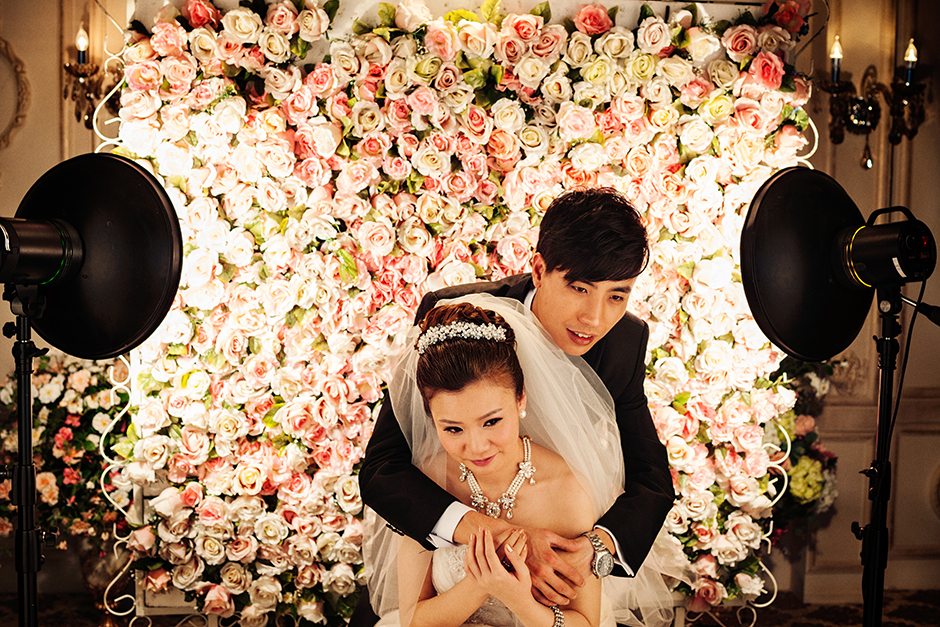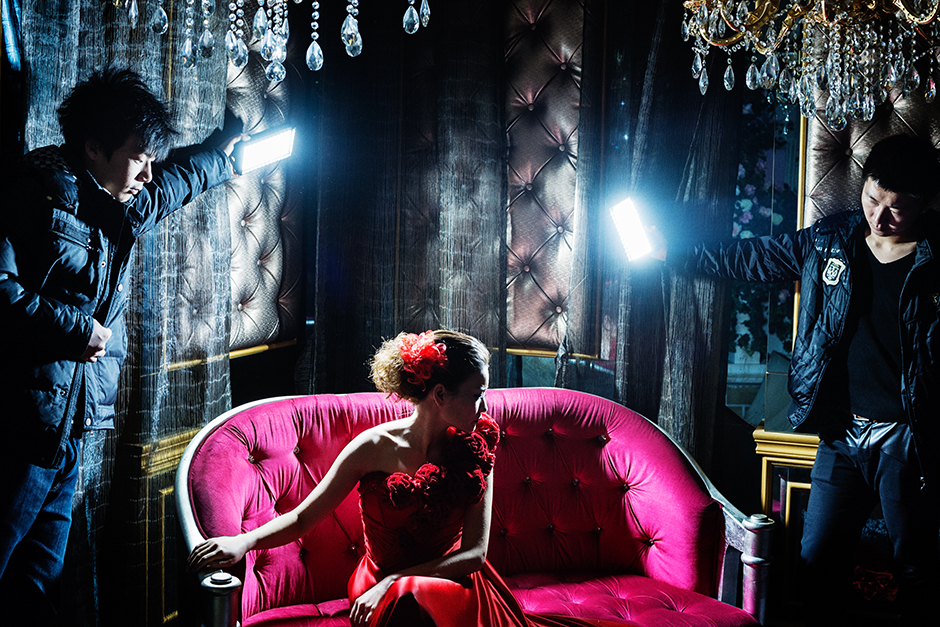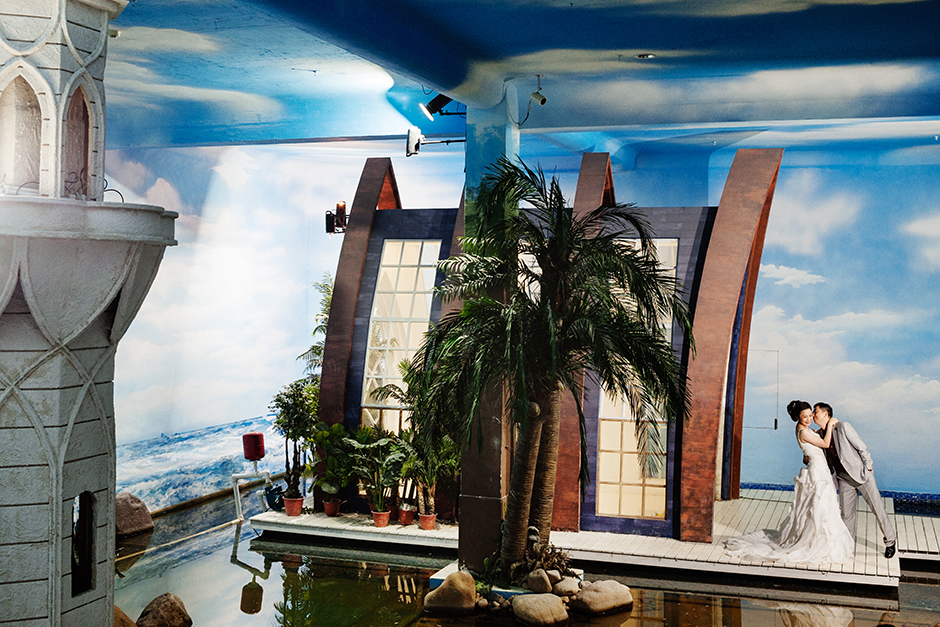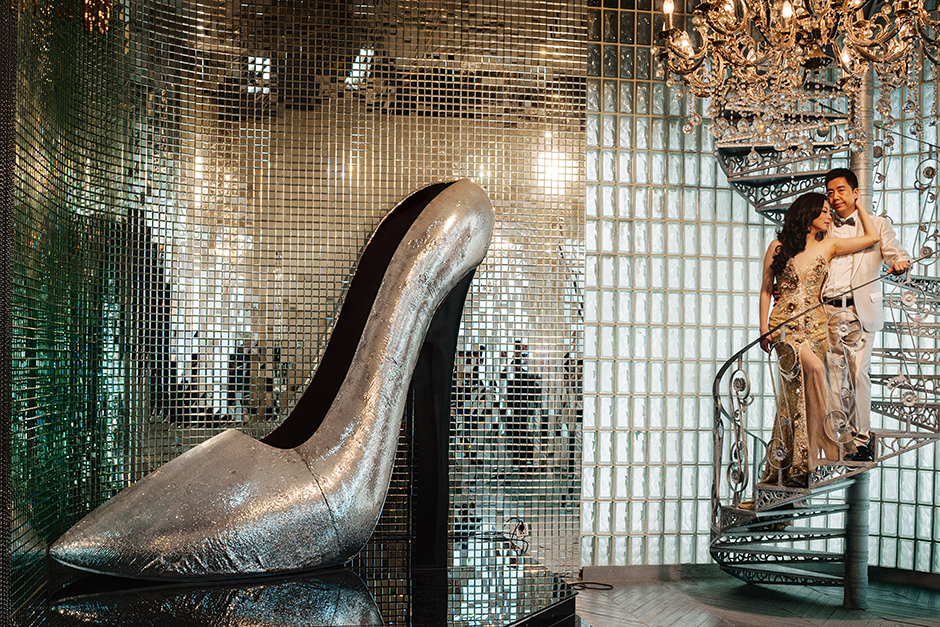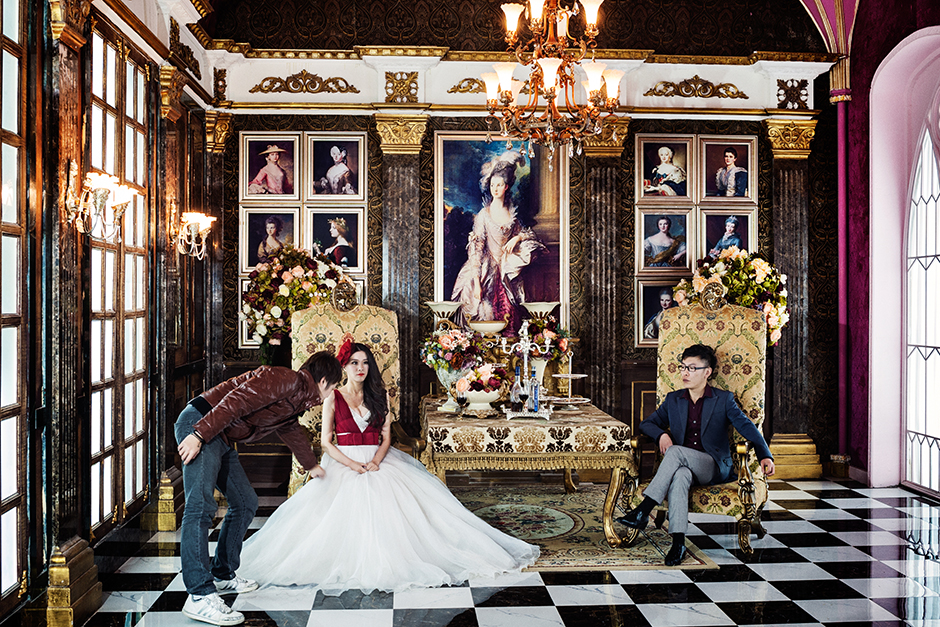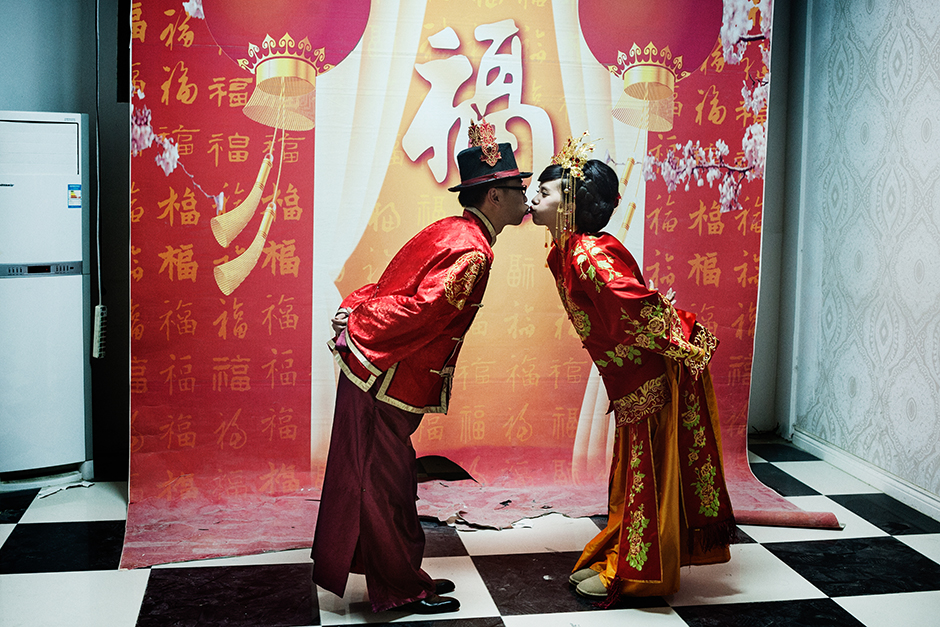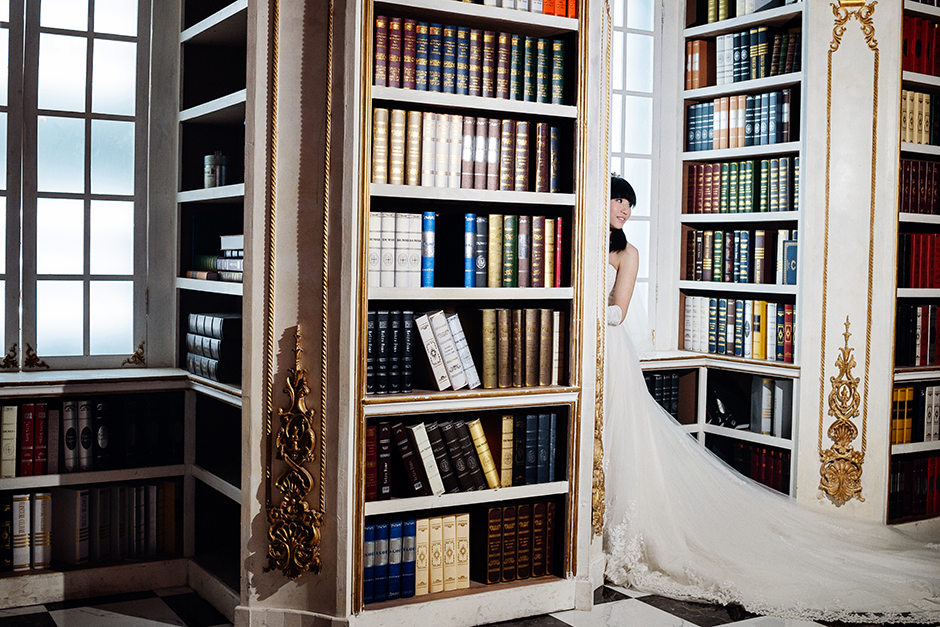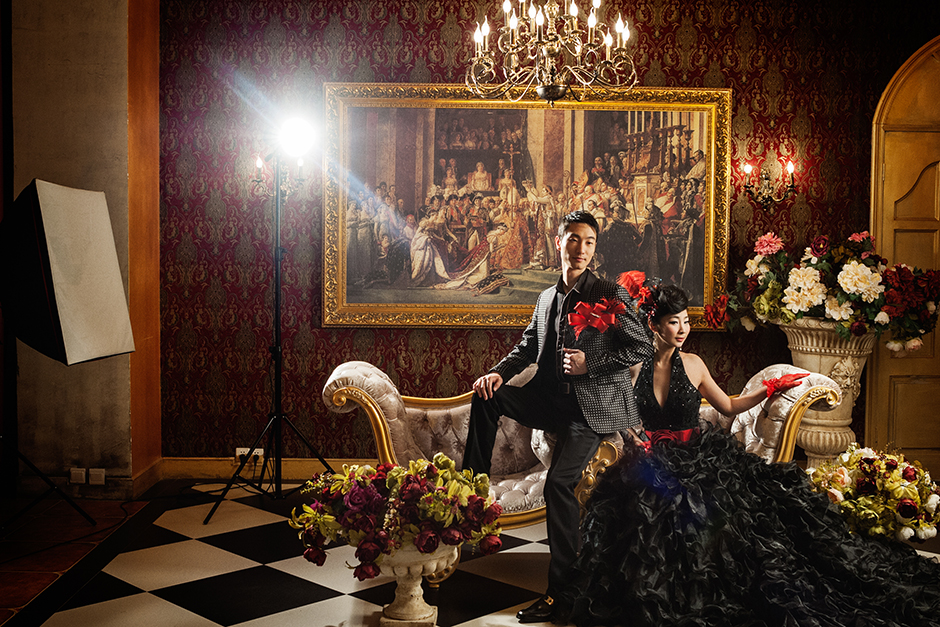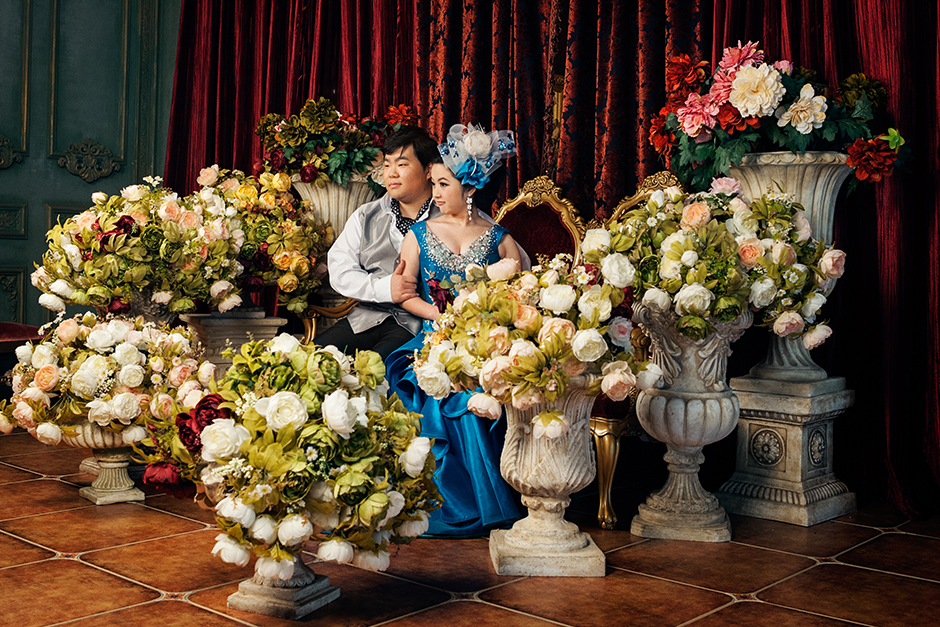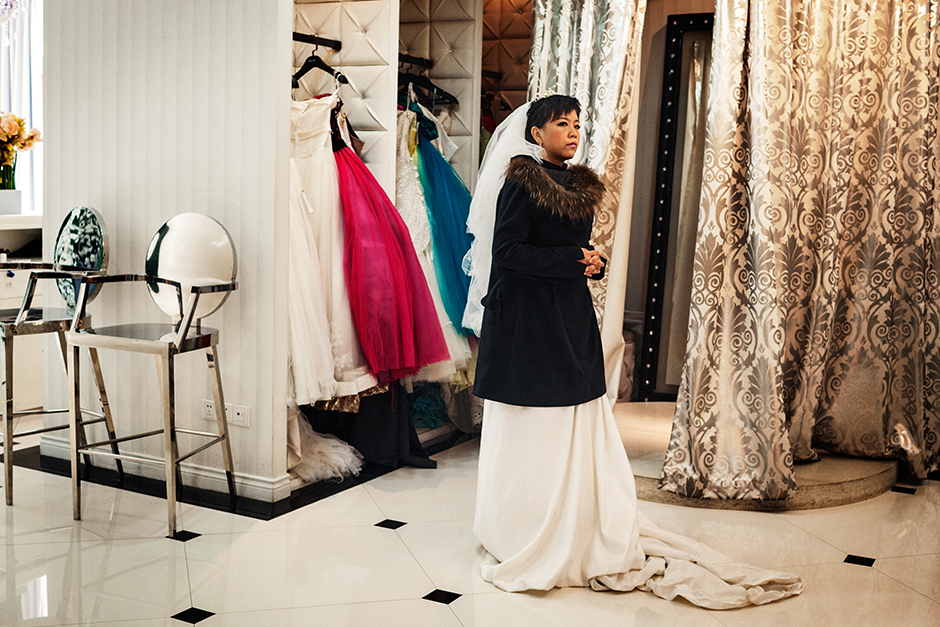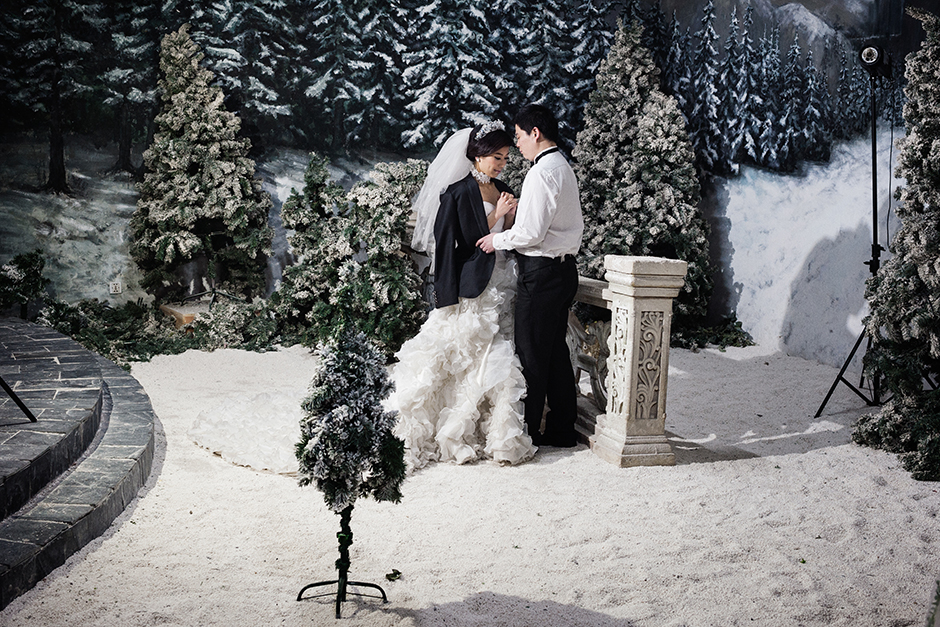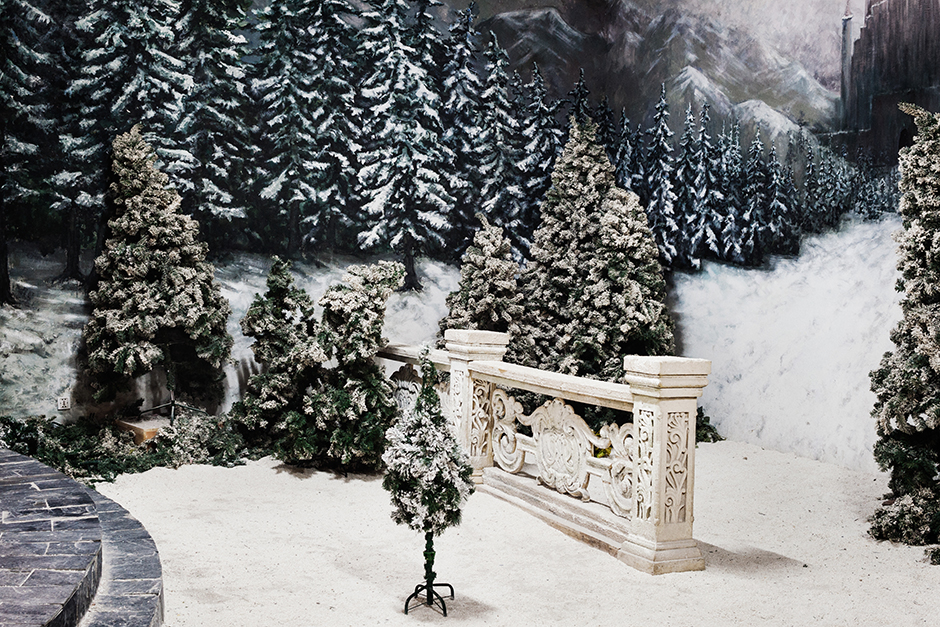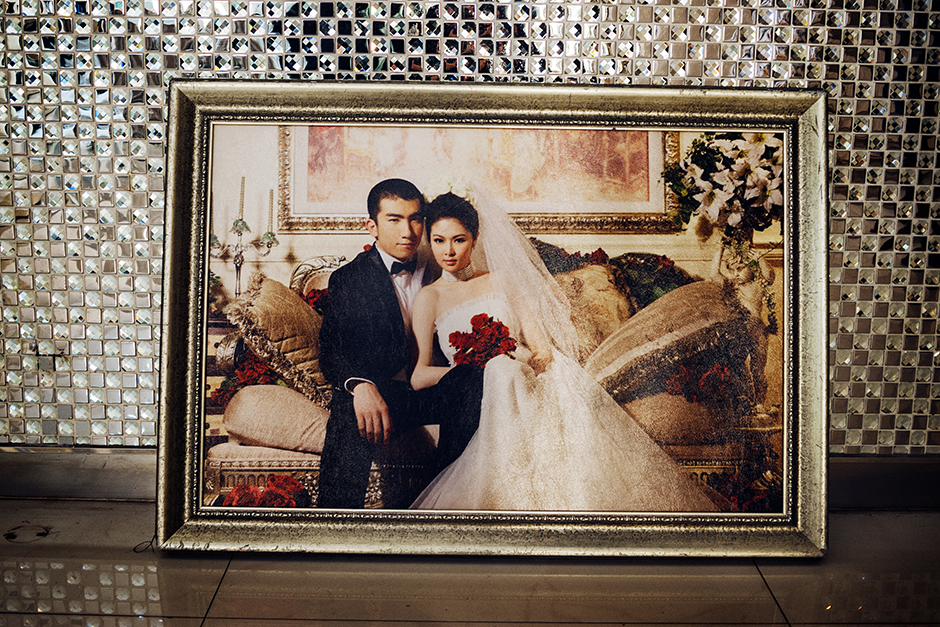First Comes Love, Then Comes...the Photo Shoot
The wedding banquet comes later. For many Chinese couples, married life really begins in the photo studio where, basted in glitter and hair gel, the brides dressed for a debut at La Scala or night out with Fabio, they gaze upon sets so tufted and inlaid and gold-foiled that comparisons to the real places that seem to have served as models—Versailles, the homes of Donald Trump—don’t quite suffice. This isn’t just a ritual for the rich and corrupt. Flinty investigative reporters, law professors at the country’s best universities, bank tellers, even men and women who ordinarily dress and live in a manner that suggests only the most passing of concern with appearances, still greet visitors to their modest homes with towering portraits of themselves surrounded by velvet and marble.
Photographer Guillaume Herbaut sees pathos and humor in these pictures. His wide-angle shots of soon-to-be newlyweds posing (or taking a break from posing) for their portraits turn the conventions of the genre upside down—sometimes not all that kindly. Instead of wedded bliss, his pictures project alienation, sexual menace, and often a profound sense of loneliness. Sociologist Leta Hong Fincher, an expert on contemporary Chinese marriage, sees in them reflections of marriage practices that sanctify wealth and debase women.
These darker themes temper the element of the photographs that is just poking fun at an easy target. China’s nouveau riche and their flight from their Communist past are constant tropes in popular foreign reporting about China. They are absurd, repellent, maybe even slightly scary. And they are endlessly useful as a shorthand for the big themes of rapid change the country has been through. Think how many U.S. magazines have dressed Mao in Louis Vuitton, or some version of the same, on their covers. In many ways, the Chinese wedding pictures are no different from any wedding photographs, never mind weddings themselves, which across cultures and epochs have always shared a fondness for artifice and displays of status. This is true as much for the brides in Brooklyn posing against exposed-brick factory walls, their bouquets of wild flowers bound in hempen twine, as it is for Chinese brides playing Marie Antoinette for a day.
Viewpoint
02.04.14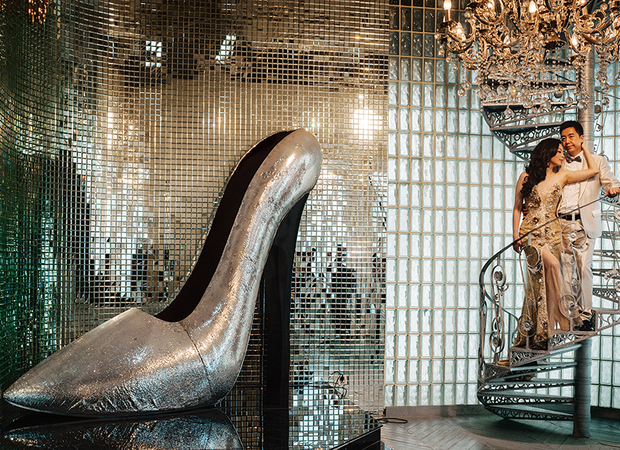
In Slickness and in Wealth
Weddings always traffic in aspiration and status symbols. But perhaps for a country emerging from decades of Communist-imposed austerity and cultural isolation—which had crushed its homegrown displays of marital excess—Western luxury at its most overripe provided the ideal material for fantasy. Wedding studios first came to the mainland from Taiwan in the ’90s at the very beginning of China’s rocket-like economic ascent. And they have multiplied and evolved as new groups have amassed the funds necessary to support 3,000 to 130,000 RMB shoots.
Over the last few months, Chinese leaders have cracked down on lavish displays of wealth among officials—five-star hotels, high-priced watches, and fancy liquor have all taken a hit. So far, wedding studios haven’t become targets. Someday in the not too distant future, Herbaut’s photos may look dated, but they will endure as a testament to the fierce, exuberant, and ravenous ambition of an age when the only answer to the question, “Do you want more?” was “I do.” —Susan Jakes




